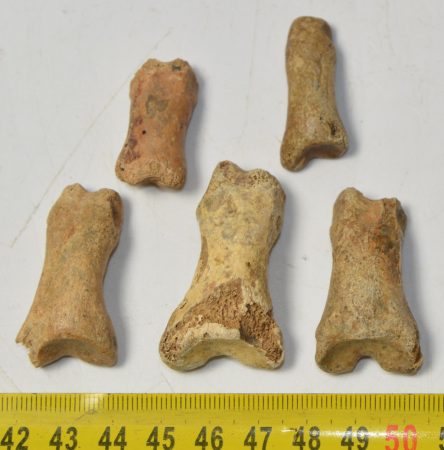- New arrivals
- Products in stock
- Mammuthus fossils [511]
- Megaloceros deer fossils [19]
- Bison Bos fossil [23]
- Rhinoceros fossil [33]
- Echinoderms sea urchin fossil [27]
- Plant wood fossils [38]
- Fish and shark fossils [48]
- Ammonites cephalopods [28]
- Mammalian vertebrates fossils [69]
- Dinosaurus fossil [44]
- Shells fossils [12]
- Gastropods fossils [30]
- Coral fossils [5]
- Trilobites & Crabs fossils [27]
- Minerals [26]
- Insect fossils [19]
- Other Fossils [12]
- Books, literature [10]
5 pc Ursus spelaeus partial toe bone SOLD (KF) 04
5 Ursus spelaeus proximal phalanges (proximal phalanges) bones from the Pleistocene age (approx. 35,000 - 70,000 years old). Origin of the bear bones: Austria, Mixnitz, Stmk. Dimensions of the bones are approx. 29 - 44 mm x 15 - 26 mm x 10 - 16 mm. Total weight of the 5 bones is approx. 32 grams + packaging. The bones are in their natural state and are not preserved.
During the extraordinary period after World War I, the cave sediments around Mixnitz began to be mined due to their Hungarian phosphate content. Due to guano (phosphate) mining, a huge amount of cave bear bones came to the surface. The amount of waste rock extracted from the Sárkány Cave is estimated at 24,000 tons, of which approx. 500 tons were cave bear bones. Of the 500 tons of bones, 4000 kg were sent to museums and universities for scientific processing. The remaining debris and bones were used to build a railway embankment leading to the cave to transport the mined guano layers with a high phosphate content. After the mining was completed, the rails were removed and the several km long railway embankment was a popular place for fossil collectors for a long time. Today, the mountain is a protected area, so further collections are not possible. The cave bear is a typical example of an animal that had an ecological relationship with the caves.
The cave bear spent its winter hibernation in caves, gave birth there, and in many cases died there. Death often overtook it during the winter months.
The caves provided very good conditions for the preservation of bones. The huge amount of bones was left behind by relatively small bear families over the millennia.









